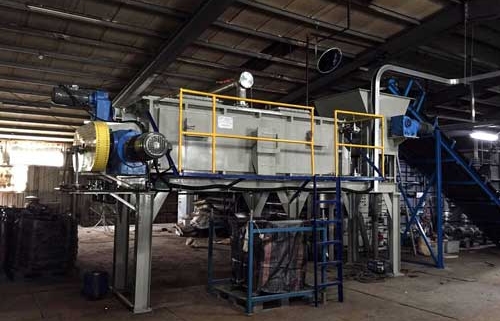The sludge paddle dryer is used in printing and dyeing, paper making, biological, electroplating, thermoelectric, chemical and sewage treatment plants. The content and requirements of structural design are also very different, but all have the same commonality. The functional design meets the functional requirements of the main sludge dryer and is technically specific. Such as the realization of the working principle, the reliability of the work, the process, materials and assembly.
Quality design takes into account various requirements and limitations, improving product quality and price/performance ratio, and it is a feature of modern engineering design. Specifically, there are many other requirements and restrictions such as operation, aesthetics, cost, safety, and environmental protection. In modern design, quality design is very important and often determines the competitiveness of the product. The design era of sludge-specific dryers that only meet the requirements of major technical functions has passed, and the overall consideration of various requirements and improvement of product quality is the key to the design of modern sludge dryers.
Sludge paddle dryer features
1. The material retention time is adjustable, it can process high water content materials, and can also obtain very low water content materials;
2. Typical conduction drying method, energy saving, large transmission coefficient, high thermal efficiency;
3. Since the required heat is all supplied by the hollow blades and the jacket, in order to reduce the humidity of the exhaust gas, a small amount of hot air is added, the dust entrainment is low, the exhaust gas is easy to handle, and auxiliary equipment such as dust removal is not required;
4. The blade has self-cleaning ability. The blades rotate in opposite directions, and the two inclined surfaces of the blade repeatedly stir, compress, relax and propel the material, so that the page has a unique byte capacity, the heating surface is continuously updated, and the heat transfer coefficient of the sludge paddle dryer is higher than other Any conduction drying method.
Manufacturing material of sludge paddle dryer
The sludge paddle dryer system is one of the thermal technologies we use to develop industrial process systems to meet your application needs. A series of pitch-adjustable blades are produced for high-speed rotation to keep the material constant, agitated contact, and prevent heat transfer wall contamination. All parts in contact with the product are made of AISI 316L stainless steel, but other weldable materials such as Alloy C-22 and AISI 904L are available upon request.
The drying chamber wall, the agitator shaft and the inlet and outlet are heated by a circulating heat transfer fluid to prevent cold spots that may cause solvent condensation or product build-up. The inner surface of the drying chamber is ground or electropolished to optimize corrosion resistance, reduce product adhesion and friction, improve powder flow behavior and facilitate cleaning operations.
A double-layer mechanical sealing system is installed on the shaft of the agitator. The purpose of the research is to ensure the vacuum tightness of the ^ and the purity of the dried material to avoid the risk of contamination of the product. The mechanical seal can be a conventional type of wet rinse or nitrogen transfer dry.
Manufacturing process of sludge paddle dryer
(1) Parts processing to ensure penetration and welding.
(2) Large-scale equipment is processed after welding to ensure the running accuracy.
(3) Manufacture and X-ray, airtightness and water pressure test according to the pressure vessel manufacturing standards.
(4) Sand blasting, rust removal, and paint.
Sludge paddle dryer design process
The advanced state of the sludge paddle dryer is inextricably linked with the market demand. Therefore, in the initial stage of market research, relevant technical personnel should develop an effective equipment research and development plan for the actual situation, and then send some professionals to the market to fully understand. The current level of technology and the problems faced by sludge dryers on the market, and the evaluation and analysis of the economic benefits brought about by equipment development, for the design of the later sludge paddle dryer fully prepared.
The effective heating area of the sludge paddle dryer is the highest, theoretically up to 100%. However, if the design and selection of the rakes are improper, the actual effective heating area will be reduced, and some may even be as low as 50%. The bare area seriously affects the normal performance of the sludge dryer. Through theoretical analysis and graphical analysis method, some guidelines for the design of the blade of the sludge dryer are given, which can eliminate the exposed area of the disk surface, improve the comprehensive heat and mass transfer coefficient of the dryer, and ensure the energy saving advantage of the sludge dryer.



